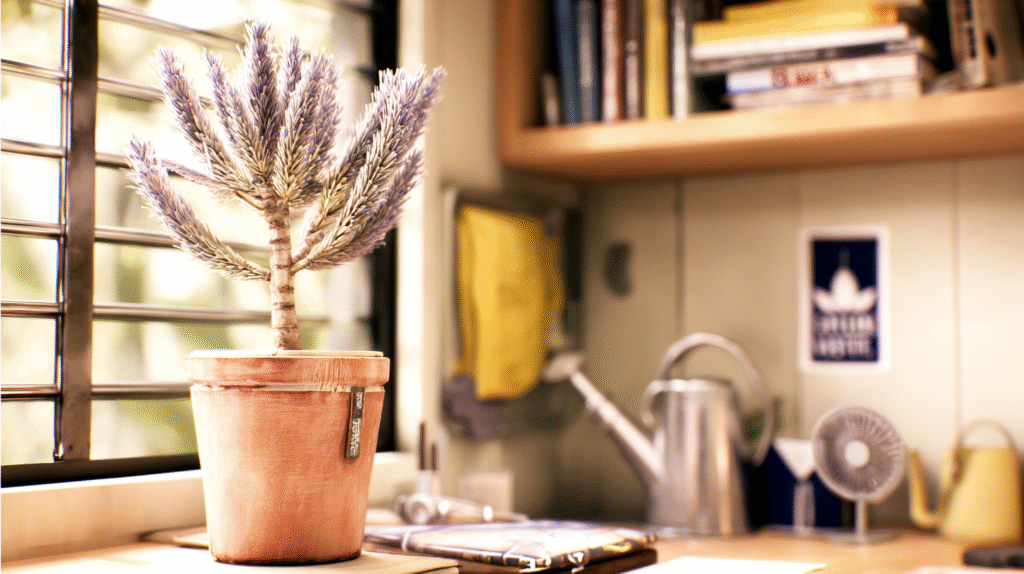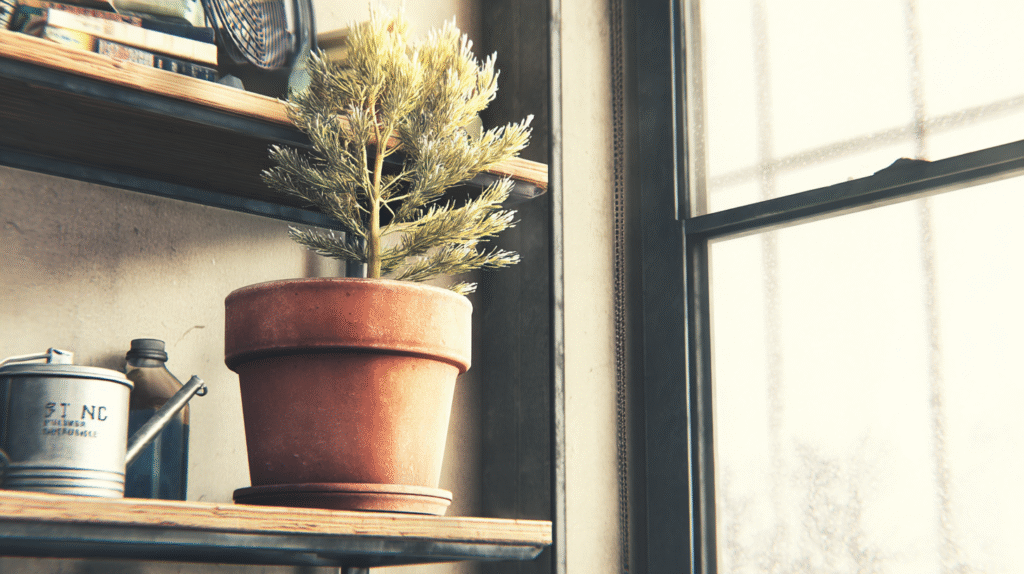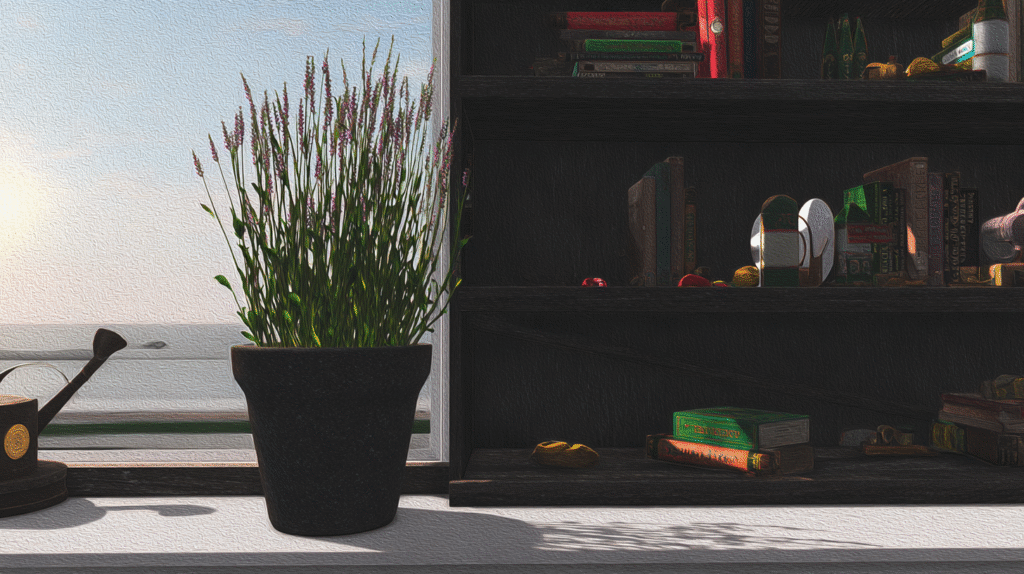Let me start with the truth nobody wants to hear: growing lavender indoors is like keeping a dolphin in a bathtub. It’s possible, but it’s fighting nature every step of the way. I learned this after killing six lavender plants in eight months, each death more expensive and frustrating than the last.
But here’s the thing – I’m stubborn. And after two years of failures, research, and probably $200 in dead plants, I finally have three thriving lavender plants in my apartment. They’re not the massive bushes you see in Provence photos, but they’re alive, they bloom, and they make my whole place smell like a spa.
If you’re determined to grow lavender indoors despite everyone (rightfully) telling you it’s a bad idea, here’s everything I learned the hard way.

Why Indoor Lavender Is So Damn Difficult
Lavender evolved in the Mediterranean – think blazing sun, rocky soil, and ocean breezes. Your apartment is basically the opposite of that. Here’s what you’re fighting:
Light: Lavender wants 8+ hours of direct sun. Most windows provide maybe 4 hours of indirect light.
Air circulation: Outside, there’s constant breeze. Inside, there’s stagnant air that lavender hates.
Humidity: Your home in winter is Sahara-dry. In summer with AC, still too dry. But also, lavender hates high humidity. It’s picky like that.
Temperature: Lavender wants cool nights and warm days. Your thermostat says 72°F forever.
I’m not trying to discourage you – just want you to know what you’re signing up for. This isn’t a pothos situation.
The Varieties That Actually Have a Chance
After killing English lavender (twice), Spanish lavender (once), and some unlabeled variety from the grocery store, here’s what actually works indoors:
French Lavender (Lavandula dentata):
- Most forgiving for indoors
- Handles less light better
- Mine has survived 18 months
- Blooms sporadically year-round
Goodwin Creek Grey:
- Lavender hybrid bred for containers
- More compact growth
- Tolerates indoor conditions better
- Actually bloomed for me indoors
Fernleaf Lavender:
- Delicate-looking but tougher than it appears
- Stays small naturally
- Mine is thriving in a south window
Skip English lavender (Lavandula angustifolia) unless you have a greenhouse. I murdered three before accepting this truth.
The Light Situation: No Shortcuts Here
This is where 90% of indoor lavender dies. Here’s what I tried:
Failed attempts:
- East window: Not enough light, stretched and died
- North window: Don’t even think about it
- “Bright indirect light”: Slow death
What finally worked:
- South-facing window PLUS grow light
- 14-16 hours total light daily
- Grow light 6 inches from plant
- Rotating weekly for even growth
My setup: Lavender on a plant stand in my south window with a clip-on grow light for supplemental afternoon light. Is it extra? Yes. Is my lavender alive? Also yes.

Soil: The Counterintuitive Truth
I killed my first lavender with “premium potting mix.” Way too rich and moisture-retentive. Here’s what actually works:
My lavender soil recipe:
- 40% cactus soil
- 30% perlite
- 20% coarse sand
- 10% small gravel
Sounds like a hostile growing medium? That’s the point. Lavender likes it lean and mean.
The limestone hack: Added crushed oyster shells (chicken feed from farm store) to make soil alkaline. Game-changer. My plants perked up within weeks.
Watering: Where Dreams Go to Die
More lavender dies from overwatering than any other cause. Here’s my hard-won wisdom:
What doesn’t work:
- Regular watering schedule
- Keeping soil “consistently moist”
- Daily misting (creates fungal issues)
What actually works:
- Water only when soil is dry 2 inches down
- In winter: Every 2-3 weeks
- In summer: Weekly, maybe
- Always water in the morning
- Never water the foliage
The terracotta advantage: Switched all my lavender to terracotta pots. They dry out faster, which lavender loves. Ugly? Maybe. Effective? Absolutely.
Air Circulation: The Secret Weapon
This was my breakthrough discovery. Stagnant air = dead lavender.
My solutions:
- Small fan running 4-6 hours daily
- Never directly on the plant
- Creates gentle air movement
- Drastically reduced fungal issues
The oscillating desk fan pointed near (not at) my lavender shelf made the difference between life and death. Literally.
Temperature and Dormancy Drama
Lavender needs winter chill to bloom properly. Your heated apartment doesn’t provide this. Options:
The garage shuffle: I move one plant to my unheated garage (stays 40-50°F) for 6 weeks in winter. It blooms like crazy in spring.
The cool room: Spare bedroom kept at 55-60°F houses another lavender in winter. Less dramatic but still effective.
The rebellious one: Third plant stays in normal temps year-round. Fewer blooms but still alive, so I’m counting it as success.
Pruning: Scary but Necessary
Killed a lavender by not pruning (got woody and died). Killed another by pruning too hard. Finally found the balance:
Light pruning after blooming:
- Remove spent flowers
- Shape lightly
- Never cut into old wood
Spring pruning:
- Cut back 1/3 of green growth
- Promotes bushiness
- Do it even if it hurts
Ongoing maintenance:
- Pinch tips to promote branching
- Remove any dead bits immediately
- If it’s getting leggy, more light needed
Common Problems I’ve Faced
Root rot:
My #1 killer. Now I’m paranoid about drainage. Extra perlite, terracotta pots, and ignoring my watering instincts saved subsequent plants.
Powdery mildew:
Poor air circulation was the culprit. Fan fixed this.
No blooms:
Not enough light or no winter chill. Added grow light and started the garage shuffle.
Leggy growth:
Insufficient light. No fix except more light. Tried to prune into shape – plant died in protest.
Spider mites:
Dry air attracts them. Regular shower rinses help. Neem oil for bad infestations.

The Realistic Expectations Part
Instagram lavender: Massive purple bushes cascading from pots Reality: 8-inch plant with 5-10 flower spikes if you’re lucky
But here’s what makes it worth it:
- Fresh lavender for tea whenever you want
- Incredible scent when you brush against it
- Satisfaction of succeeding at something difficult
- Conversation starter (“Yes, that’s lavender. Yes, indoors.”)
Why I Keep Trying
After all this effort, why not just grow mint or basil like a normal person? Because when that first flower spike appears on a plant you’ve nursed through winter, when your apartment smells like a French countryside, when you harvest your own lavender for cookies – it’s worth every dead plant that came before.
My current three plants aren’t perfect. They’re smaller than outdoor lavender, bloom less frequently, and require more attention than all my other plants combined. But they’re alive, they’re mine, and they proved everyone wrong who said it couldn’t be done.
Your Best Shot at Success
If you’re still determined:
- Start with French lavender or Goodwin Creek Grey
- Invest in a grow light immediately
- Use fast-draining soil in terracotta
- Get a small fan
- Water way less than you think
- Accept it might die anyway
Growing lavender indoors isn’t for casual plant parents. It’s for stubborn people who like challenges and don’t mind spending money on grow lights and special soil. But if you succeed, you’ll have something most people think is impossible – thriving indoor lavender.
Just maybe start with one plant instead of six. Learn from my expensive mistakes. Your wallet (and confidence) will thank you. 🪻






